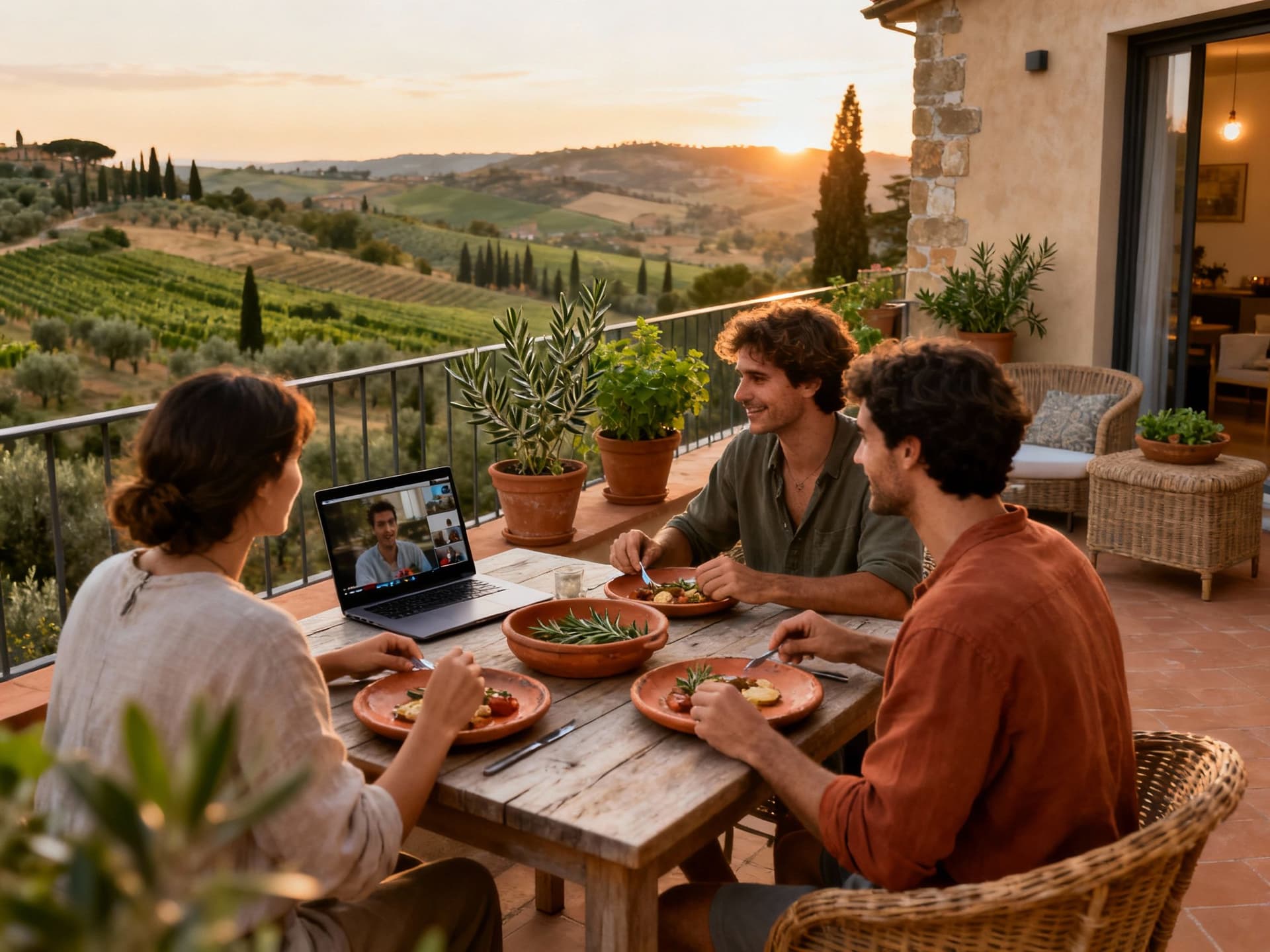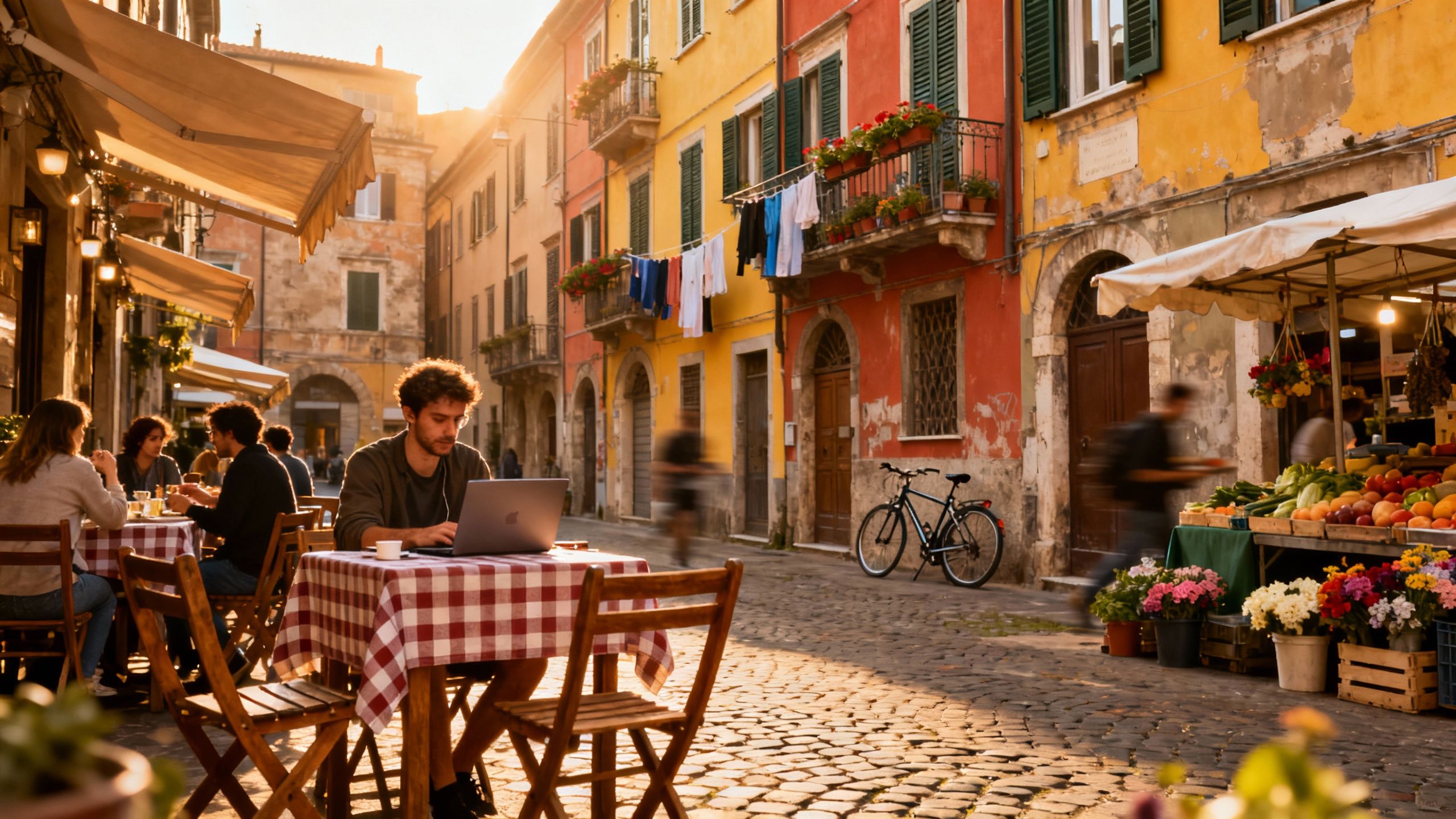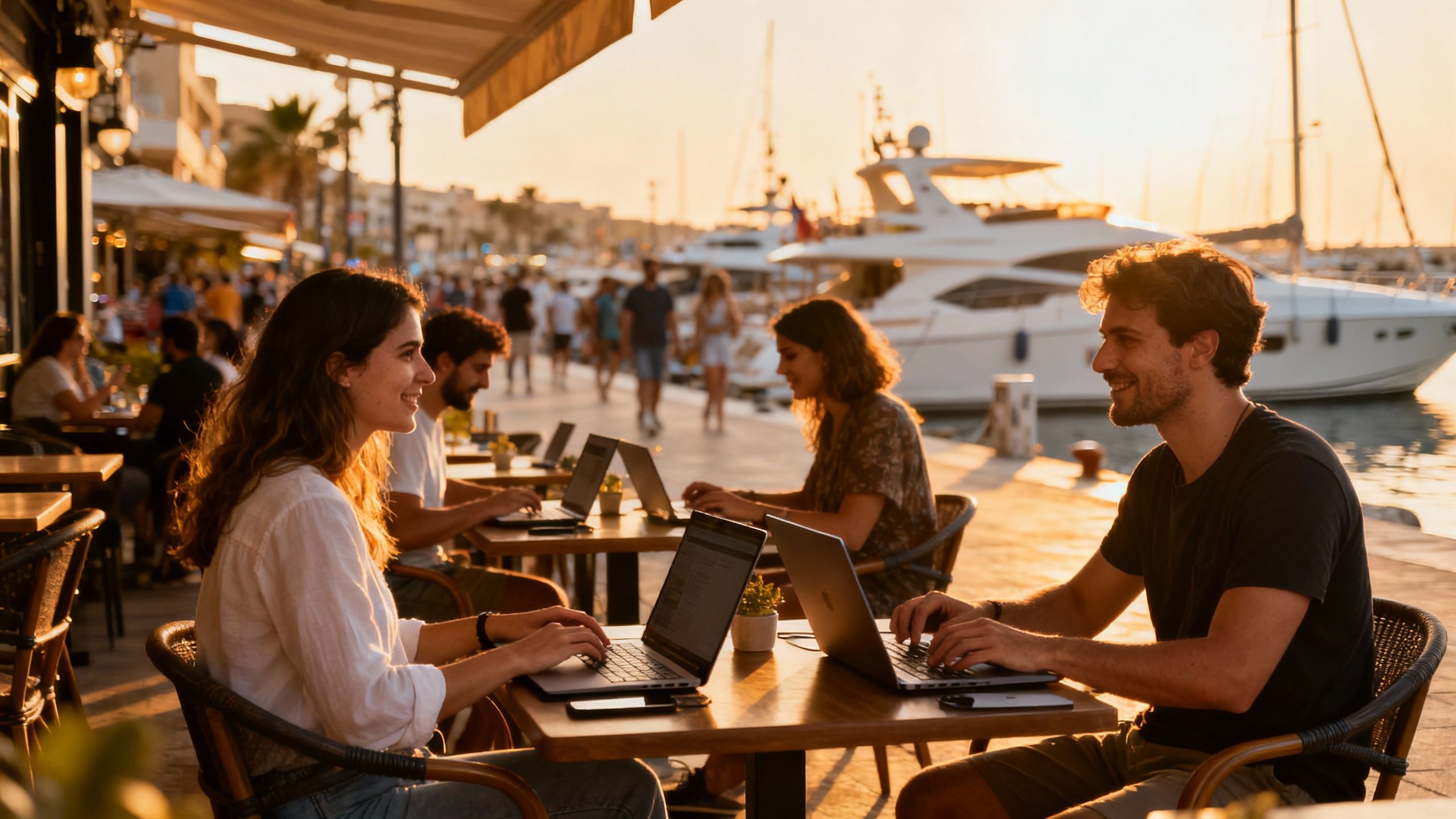Elective, Nomad, Investor: Italy residency tradeoffs
Compare Italy's Elective, Digital Nomad and Investor residency routes — lifestyle tradeoffs, real steps, and legal sources to match your dream daily life to the right visa.
Imagine sipping espresso at a sunny piazza in Puglia, then answering a 10am client call with farm fields and church bells behind you. Italy sells mornings like a movie — slow, sensory, delicious — but the residency pages you’ll sign? Those are blunt, bureaucratic and decisive. This piece compares three realistic ways to stay: Elective Residence, the new Digital Nomad pathway, and the Investor Visa — and explains which one actually fits the lifestyle you crave.
Living the Italy lifestyle — what you’re really buying

Italy isn’t a single vibe. It’s a handful of daily rhythms: espresso counters at 8am in Milan, seafood markets at dawn in Naples, slow vineyard weekends in Tuscany. For a nomad, that diversity is gold. But lifestyle choices — city apartment vs coastal villa vs countryside farmhouse — map directly to which visa route will feel smooth, possible, or downright awkward.
City pulse: Milan, Bologna, Rome
If coworking, fast fiber and networking nights are your oxygen, pick Milan’s Navigli, Porta Romana or Bologna’s Centro. You’ll trade square metres for speed and community — perfect for a digital nomad who needs reliable internet, cafés with outlets, and meetups. Note: short-term nomad living in central apartments often means higher rent and smaller terraces.
Coast & slow towns: Puglia, Sicily, Liguria
Dreaming of a sea-view balcony in Polignano a Mare or a pastel house in Cefalù? These places give space and lifestyle for less money, but expect patchy internet in tiny hamlets and seasonal crowds. They pair best with residency routes that allow flexible presence — think elective residence or investor routes where you can spend months in Italy and months working remotely elsewhere.
- Lifestyle highlights
• Morning espresso at Caffè Florian (Venice) and afternoon co‑working at Talent Garden (Milan). • Sunday mercato strolls in Campo de' Fiori (Rome) or Mercato del Carmine (Florence). • Sunset swims on the Amalfi cliffs or early hikes in the Dolomites. • Neighborhood café culture: the true social network for locals and expats.
Making the move: how lifestyle maps to legal routes

Here’s the tradeoff: visas that demand money (Investor Visa) or proof of independent means (Elective Residence) buy you legal peace of mind but may limit how much you’re actually present. Newer nomad-style visas let you plug into local life with less upfront capital, but come with income thresholds and short renewal cycles. Below we translate each into lifestyle terms, plus the practical steps you’ll care about.
Investor Visa — the status for people who literally buy in. Minimums range from €250k in startups to €2M in government bonds. You get a two-year visa then a renewable residence permit; family reunification is possible and you can spend very little time physically in Italy while retaining the permit. That makes it ideal if you want an Italian base without daily life obligations.
Digital Nomad (new, targeted at remote workers): Designed for freelancers and remote employees with foreign employers. Reports indicate income floors (around €28k–€30k/year), proof of six months remote work and valid insurance. It’s the lifestyle-friendly option: live in a historic centre or a beach town, keep work flexible, but expect strict income proof and initial in-person consular steps.
Elective Residence — the classic expat route for people with stable passive income. You don’t take local employment, must show substantial, steady funds or pensions and proof of a home to register. It pairs perfectly with a slow-life move: restore a farmhouse, join a village community, and work occasionally from town cafés. The downside: consulates can be strict about what ‘stable means’ — recent case law shows successful challenges to denials when evidence is solid.
- Steps to match lifestyle with visa (quick ranking)
1. If you need minimal residency time in Italy but want legal status and family rights: Investor Visa. 2. If you want to live locally and work remotely with moderate income: Digital Nomad visa. 3. If you have passive income/savings and want deep local life without working locally: Elective Residence.
Insider knowledge: what expats wish they’d known
The romantic part of Italy — olive harvests, aperitivo terraces — coexists with nitty-gritty rules. For example, the Italian non-dom style flat tax (a forfait for high-net-worth newcomers on foreign income) can be a real lever for long-term planning, but it requires careful timing and advice. Learn the local fiscal calendar before you move: it’ll save you headaches and unexpected tax bills.
Language, community, and the social map
You don’t need perfect Italian to live well — a few market phrases and a friendly barista go a long way — but language accelerates belonging. Join local associazioni, attend mercato mornings, and learn where the informal ‘network’ lives: piazzas, parish events, and neighborhood bars. These are the places agencies rarely show on listings but which determine daily happiness.
- Practical expat tips (real things people forget)
• Internet: always check wired fiber availability and upload speeds, not just advertised download. • Healthcare: register for the SSN (Servizio Sanitario Nazionale) after residency to avoid private bills. • Notary culture: Italian property closings use notaries; expect a language-heavy, document-driven process. • Seasonal life: coastal towns can feel dead in winter; check year-round services before buying.
How local agencies help: real estate pros do more than show houses. The right agent introduces you to neighborhoods, tests internet at properties, connects you to accountants who understand residency tax options, and pre-checks registration feasibility at the local Comune. Use an agency that proactively scouts lifestyle fit — rooftop terraces for evening work, south-facing windows for winter light, proximity to coworking for community.
- Step-by-step checklist when you’ve fallen in love with a place
1. Visit off-season to test daily life (utilities, shops, transport). 2. Ask the agent for a fibre speed test and SSID/password history. 3. Confirm residency registration at the Comune for the specific address. 4. Consult a local accountant about tax residency timing and any flat-tax options. 5. Pre-check visa eligibility (Elective/Investor/Nomad) with immigration counsel before offer.
When money talks: what the data actually show
Official sources confirm investor routes remain active and digital-nomad pathways exist but carry income thresholds. For buyers, that means your financial profile is often determinative: modest budgets pair better with elective residence in lower-cost regions; higher budgets unlock investor perks and easier family reunification. Always verify current thresholds at consulates or official portals before booking flights.
Conclusion: pick the life first, then the visa. If you crave community, neighbourhood cafés, and year-round rhythm, plan for routes that allow a deep presence (elective residence or long-term permits backed by investment). If you want flexible work-from-anywhere months and city coworking, the nomad pathway keeps things light and legal. Talk to an Italian-savvy agency and an immigration lawyer together — they’ll translate lifestyle wants into the right paperwork so your first espresso in Italy tastes like possibility, not panic.
Swedish, relocated to Marbella in 2018 to chase sun and property freedom. Focus on legal navigation and tax for Nordic buyers.


